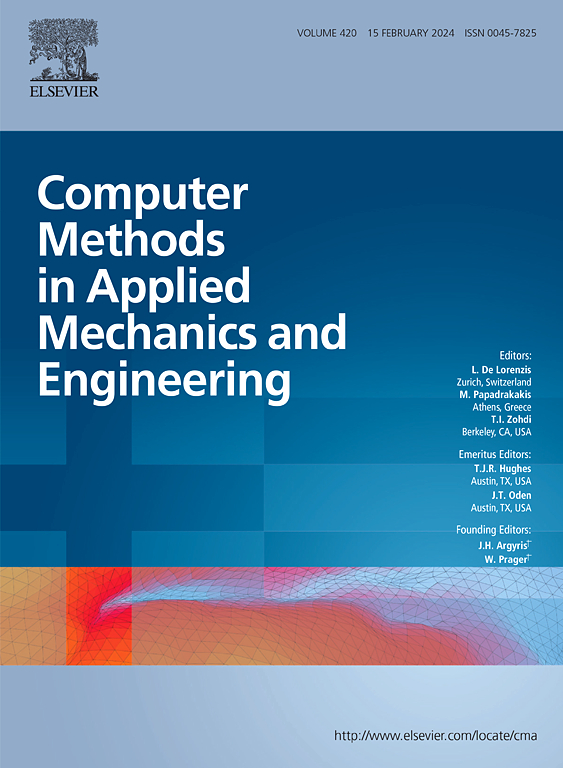Customized Gaussian process for representing polycrystalline texture
IF 6.9
1区 工程技术
Q1 ENGINEERING, MULTIDISCIPLINARY
Computer Methods in Applied Mechanics and Engineering
Pub Date : 2025-03-25
DOI:10.1016/j.cma.2025.117934
引用次数: 0
Abstract
A customized Gaussian Process Regression (GPR) model is developed to reconstruct Pole Density Functions in texture analysis. The model integrates spherical-periodic distance measures with conventional stationary kernels, adapting the GPR framework to capture localized texture features. A key contribution is the introduction of a log-linear data transformation, which enforces the non-negativity of both interpolated function values and stochastic intervals, ensuring physically meaningful reconstructions. To assess the model’s effectiveness, a systematic investigation examines the impact of distance measures, kernel selection, and hyperparameter optimization using synthetic texture datasets, provided as part of this work, with evaluations focusing on reconstruction accuracy, feature preservation, and uncertainty quantification in comparison to the conventional spherical harmonics approach. GPR with a log-linear transformation, geodesic distance, and a Matérn =5/2 kernel, shows promise in achieving higher accuracy than traditional spherical harmonics for reconstructing non-negative pole density functions, while additionally providing confidence intervals for uncertainty quantification.

自定义高斯过程表示多晶纹理
提出了一种自定义高斯过程回归(GPR)模型,用于重建纹理分析中的极密度函数。该模型将球周期距离测量与常规静止核相结合,采用GPR框架捕获局部纹理特征。一个关键的贡献是引入了对数线性数据转换,它强制插值函数值和随机区间的非负性,确保物理上有意义的重建。为了评估模型的有效性,一项系统的调查研究了使用合成纹理数据集的距离度量、核选择和超参数优化的影响,作为这项工作的一部分,与传统的球面谐波方法相比,评估的重点是重建精度、特征保存和不确定性量化。GPR采用对数线性变换、测地线距离和mat ν=5/2核,在重建非负极密度函数时,有望获得比传统球面谐波更高的精度,同时还为不确定性量化提供了置信区间。
本文章由计算机程序翻译,如有差异,请以英文原文为准。
求助全文
约1分钟内获得全文
求助全文
来源期刊
CiteScore
12.70
自引率
15.30%
发文量
719
审稿时长
44 days
期刊介绍:
Computer Methods in Applied Mechanics and Engineering stands as a cornerstone in the realm of computational science and engineering. With a history spanning over five decades, the journal has been a key platform for disseminating papers on advanced mathematical modeling and numerical solutions. Interdisciplinary in nature, these contributions encompass mechanics, mathematics, computer science, and various scientific disciplines. The journal welcomes a broad range of computational methods addressing the simulation, analysis, and design of complex physical problems, making it a vital resource for researchers in the field.

 求助内容:
求助内容: 应助结果提醒方式:
应助结果提醒方式:


